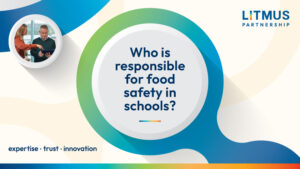Catering budgets in schools are squeezed. Although the universal infant free school meals (UIFSM) increased last year from £2.41 to £2.53, the amount has not kept up with food price inflation and labour costs.
Schools across the board – whether that’s state, independent or Multi-Academy Trusts – have to be nimble and think creatively about how they provide quality food for their pupils that also works within their budgets.
We’ve worked within the Education sector for over three decades and have helped thousands understand how they can increase the ‘spend on plate’, without incurring increased meal costs.
Here are our top tips on how to increase your spend on the plate:
- Conduct a best value review where we look at how effective your food procurement operation is and if it’s providing value for money. We look at the suppliers you buy from, the number of suppliers and also the number of products, and benchmark the costs against best-in-class. From here, we can highlight key areas where there is room for improvement with an options appraisal for how these might be delivered.
- Utilise the latest technology: There are tech driven systems that help schools manage their food procurement in-house– such as our newly launched in-house food procurement and catering management system, Litmus Edge. Procurement costs can be reduced by up to 20% by using Edge, through access to a network of specialist suppliers and expertly negotiated prices alongside real-time benchmarking and automated price file maintenance. This can unlock essential funds that can be used to significantly increase your spend on the plate. Schools also have the choice to manage their own existing supplier arrangements within the Edge platform.
- Menu planning and cycle ordering: Look at how ingredients can be reused in clever ways for future production; invest in smart kit like a blast chiller to safely chill down hot food, such as joints of meat, to reuse in sandwiches the next day; review recipes to ensure protein content isn’t excessive; increase non-meat content and plant-based proteins to create nutritious and affordable dishes such as beef and lentil shepherd’s pie and so on.
- Engage with pupils and understand what they would like to see on the menus and what their favourite dishes are. Aligning your offering to what your pupils want will help to encourage them to buy their food in school, as opposed to bringing in packed lunches or visiting nearby shops.
- Streamline kitchen management processes through tech: Litmus Edge reduces time spent on kitchen administration by 15 hours per month on average by streamlining stock management, providing a single point of ordering and consolidated invoicing, real-time end-to-end dashboard reporting, and simplified team, task and diary management. With those extra hours, the catering team can be deployed elsewhere to focus on helping to increase uptake or develop recipes.
- Record your food waste on a daily basis so you understand the sources of the food waste and the cost of what is going in the bin. From there, you can refine your menu, your production volume and ordering amounts. Systems such as DigiTally are proven to reduce plate waste in particular, generating significant savings for schools.
All of these approaches will ultimately streamline your procurement and operational efficiencies, resulting in cost and time savings, which can be used to increase the amount of ‘spend on the plate’.
Would you like to hear more? You can find out about Litmus Edge by clicking here, or reach out to Katie Foster to discuss your current catering challenges and discover how we could help.
The Litmus team











